Titaea tamerlan
TYE-tee-uh mm
ta-MER-lan
(Maassen, 1869) Dysdaemonia
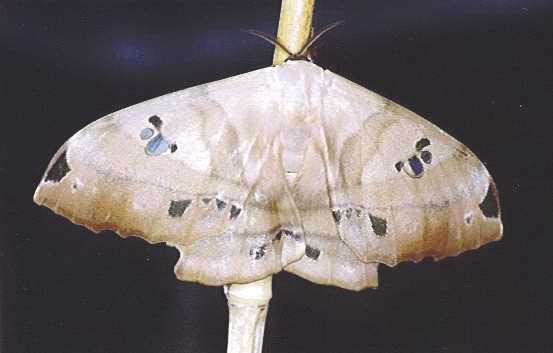
Titaea tamerlan (female) courtesy of Angelo Santin.
This page about Titaea tamerlan has been created by
Bill Oehlke at oehlkew@islandtelecom.com
Comments, suggestions and/or additional information are welcomed by Bill.
TAXONOMY:Superfamily: Bombycoidea, Latreille, 1802 |
"The.Girl.from.Ipanema"
midi by Mel WebbON.OFF |
DISTRIBUTION:
The Titaea tamerlan moth flies in Central and South America.
FLIGHT TIMES AND PREFERRED FOOD PLANTS:
Titaea tamerlan larvae feed upon Bombax (Silk-cotton tree),
Bombacopsis quinatum (Bombacopsis) and Tilia platyphyllos (Basswood/Lime) and possibly kopak trees.
In Costa Rica moths are taken in June-July and then again in the fall.
ECLOSION, SCENTING AND MATING:
Adults eclose in the evening (7-8 pm) from underground pupae
There is no distinguishing of sexes by antennae, but males have slightly more elongate tails than do the females which emit an airbourne pheromone to call in males at night.
EGGS, LARVAE, COCOONS, AND PUPAE:
Eggs typically incubate for seven to eight days.First instar larvae are well adorned with protective "spikes", especially long and bifurcate on thoracic segments. Images courtesy of Dan Janzen. | 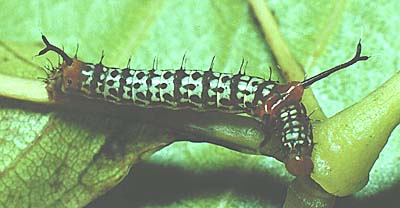 |
Colour and patterning change dramatically as these larvae move into subsequent instars.This second instar larva may have protective camouflage of "bird dropping". | 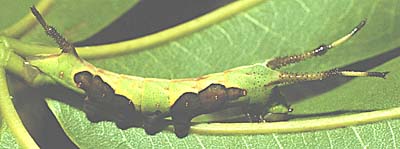 |
Colours change with each subsequent moult, and now basic green colour prevails. A central yellow dorsal line, suggesting a leaf vein, runs the length of the caterpillar. |
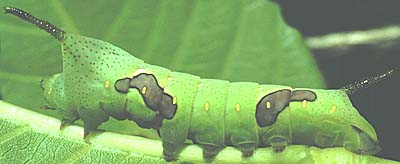 |
Larvae bulk up considerably in final instar where they are without "horns".Caterpillars will descend trees to pupate in the soil. |
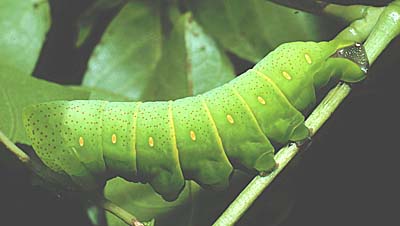 |
There is considerable colour and patterning variation among larvae.Image courtesy of Angelo Santin. |
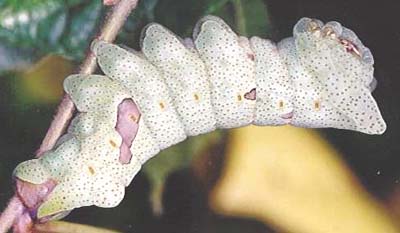 |
Larval Food Plants
Listed below are primary food plant(s) and alternate food plants listed in Stephen E.
Stone's Foodplants of World Saturniidae. It is hoped that this
alphabetical listing followed by the common name of the foodplant will
prove useful. The list is not exhaustive. Experimenting with closely
related foodplants is worthwhile.
Bombax
Bombacopsis quinatum.....
Tilia platyphyllos
Silk-cotton tree
Bombacopsis
Basswood/Lime
Return to SAMPLES Index
Return to Introduction with members' comments
Bombax
|
Silk-cotton tree |
Return to SAMPLES Index
Return to Introduction with members' comments